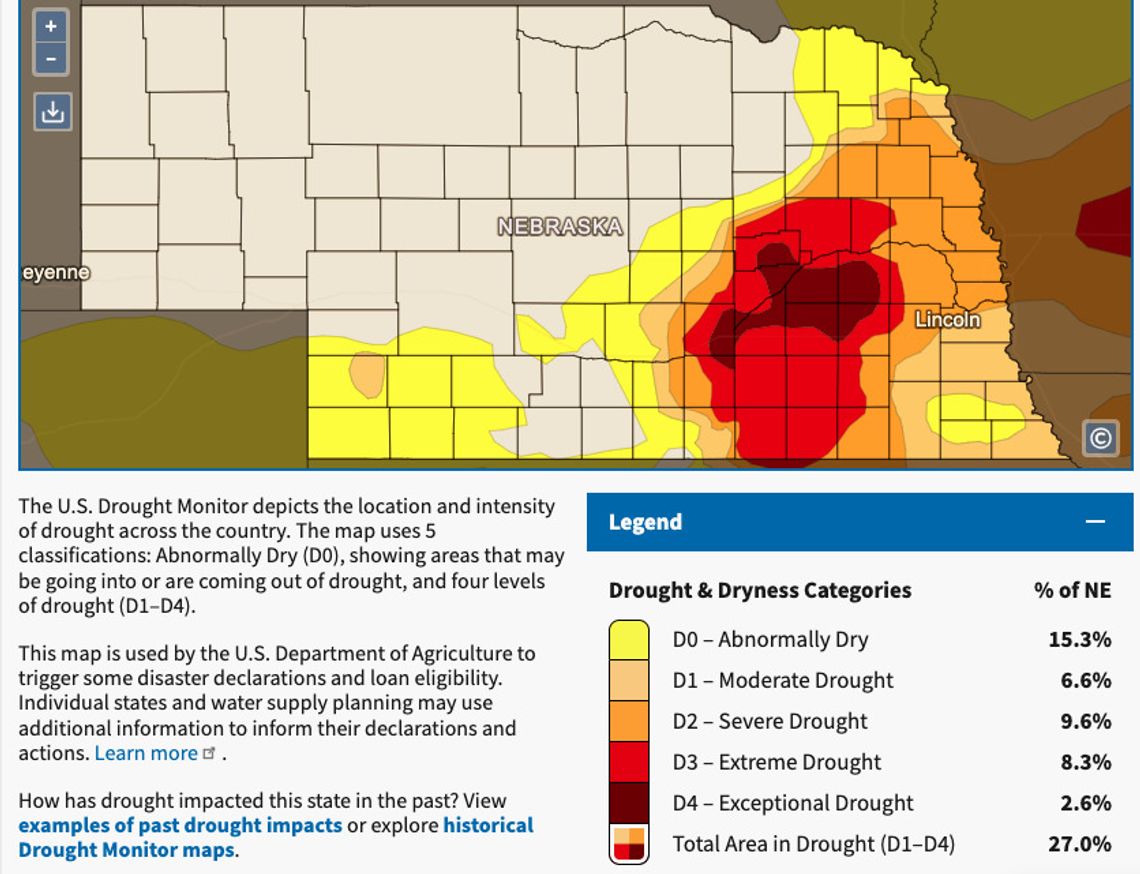LINCOLN – Drought remained the main weather concern for 2023, but those conditions are easing in Cedar County and in northern areas of the state.
“Cedar County is better off than its neighbors to the south. I’m not saying farmers there were lucky this year or it was a golden year, but in comparison to what we’re dealing with an hour and half south of you, you are better off,” said Eric Hunt, assistant Extension Educator of Agricultural Meteorology and Climate Resilience at the University of Nebraska-Lincoln.
There’s still some long-standing precipitation deficits but parts of Cedar and Dixon counties picked up some moisture in 2023 that improved the outlook. Although the area is still considered abnormally dry, moisture this spring and some last summer rainfalls helped improve the county’s U.S. Drought Monitor ranking.
The summer heat was classified as average and although there was some impressive heat and humidity in mid-August, overall conditions remained favorable, Hunt said.
October ushered in some wet weather in northeast Nebraska.
“Most places did pretty well with another round of decent improvements,” Hunt said.
November was dry overall and the weather was very warm for the state in December.
“It was the first December on record with subfreezing high temperatures. It’s unprecedented I think,” Hunt said.
Those who were dreaming of a White Christmas got their wish though. A Christmas Day blizzard dumped multiple inches of snow in Cedar County, however, the temperatures remained in the 20s and 30s.
Mild temperatures allowed much of the preceding rain and initial snowfall to seep into the soil instead of becoming runoff due to frozen ground, he said.
So, what can we expect in 2024? Hunt predicts a more active winter storm pattern for January which will continue to help make modest drought improvements throughout the state. Expect mild weather for the next couple of weeks until a polar vortex will break through in late January and early February. Hunt forecasts an Arctic blast of freezing temperatures coupled with the potential for some significant winter storms at that time.
There’s also a signal for a wetter spring and summer.
“There’s actually a lot of signs pointing towards some good news going into the growing season in terms of precipitation,” Hunt said. “The springs and summers after an El Nino (weather pattern) tend to be warmer and a bit more humid.”
Due to a higher probability of spring moisture and humidity, farmers may find themselves delayed in getting crops plant–––ed in May, Hunt said.
“It’s a warning to farmers to think through these issues very carefully and plan for this to be a potentially wetter type of year,” he said.
.jpg)











